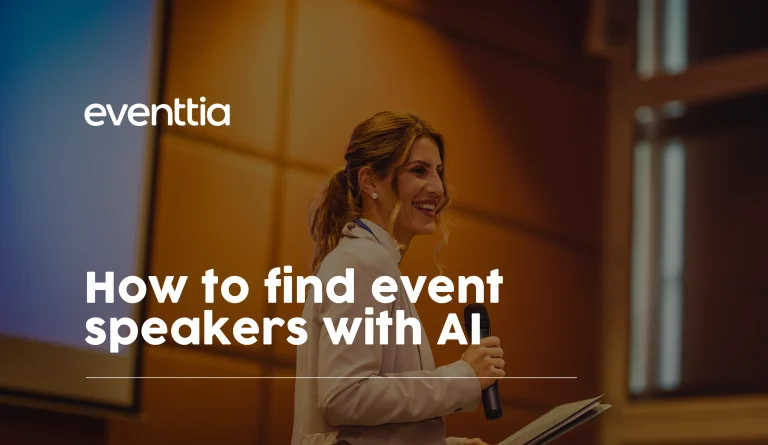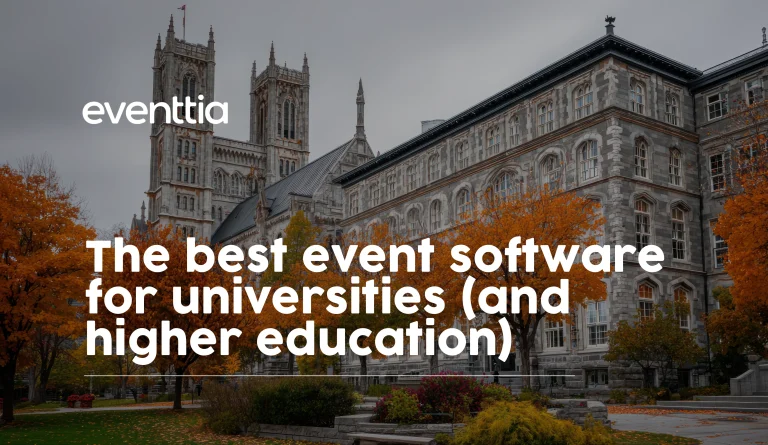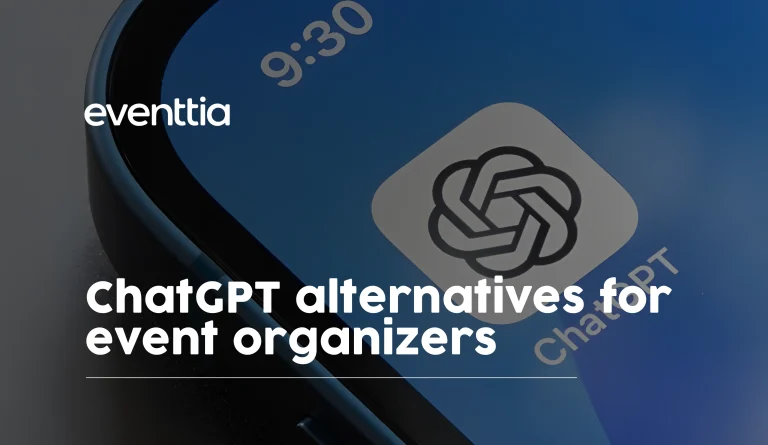Engagement at your event is just as, if not arguably, even more important than simply attracting more attendees.
After all, the number of attendees alone shouldn’t be the end goal of planning and hosting your event, and if your attendees are not properly engaged, you won’t be able to effectively achieve these goals, be it selling your products/services, generating leads, building brand awareness, and more.
So, how can you increase attendees’ participation in your next event?
In this article, we will discuss all you need to know about how to improve the attendance engagement rate at your events, and it will cover:
- The concept of participation and engagement rates in events
- How attendee engagement impacts the attendee experience
- Why participation rate is crucial for your event’s success
- How to evaluate participation and engagement
- How to improve your event’s participation and engagement rates
What is Attendee Engagement?
Attendee engagement, also known as audience engagement or simply event engagement, refers to how well an event can hold the attention of its attendees and the level of how attendees’ interact with other attendees, the event’s content, and other elements like sponsors, brands, special sessions (i.e., networking sessions), event team, and more.
In short, a successful event is not only successful in attracting enough attendees but must also be able to engage with these attendees throughout the whole event.
Why is the Attendee Engagement Rate Important When Running an Event?
Simply put, a high attendee engagement rate or participation rate means a higher likelihood of attendee satisfaction, and a satisfied attendee is more likely to:
- Make the desired conversion (purchase the products/services, sign up for an email newsletter, etc.)
- Mention and give positive review your event on social media
- Recommend your event to their friends and peers
- Attend your next event
In short, happy and satisfied attendees will, in turn, produce many different benefits for your current and future events.
Here are how higher participation can improve attendee satisfaction:
1. Higher participation leads to better understanding of the event’s content
The more an attendee participates in the event, the more they can learn from the event’s content and the more values they can extract.
Various recent studies have suggested that when people learn and feel they are growing, they will feel happier. If you can maintain a high event engagement rate, more of your attendees will feel happy and satisfied as they leave your doors.
2. Higher participation generates more positive memories
Participating more in your event’s activities and engaging other attendees means they will spend more time enjoying the event experiences, and they’ll have more positive memories about the night.
Memories impact satisfaction and happiness more than the experience itself, and by ensuring high participation, you can help your attendees create these memories together.
3.Higher participation increases co-creation and collaboration
By engaging and interacting with other participants, your event attendees can take part in co-creative dynamics so they can get to know each other better, potentially starting new fruitful relationships and business partnerships.
By collaborating together, attendees can also have the opportunity to understand the event content better and extract more value from it together by learning from each other and finding new innovative ideas.
4. Higher participation helps with immersion in the event experience
A higher participation rate would ultimately allow your attendees to feel more while experiencing the event. When you are emotionally connected and immersed, you feel like you belong there.
Having an immersive experience would ultimately translate into a higher satisfaction rate.
5. Higher participation helps attendees to tap into the wisdom of the crowd
Being immersed and engaged in the event activities would allow attendees to tap into the “wisdom of the crowd” effect, allowing them a much better event experience as a collective rather than enjoying it individually.
How To Measure Event Engagement: Participation/Engagement Metrics to Evaluate
Events are unique, and each may require different approaches to effectively measure its attendees’ engagement levels.
However, here are some of the basic participation and engagement metrics to measure as a benchmark for all sorts of events:
1. Number of answered surveys
Running post-event surveys is one of the best ways to elicit feedback from attendees about your event, but it is also a very effective method to measure participant/engagement rates.
A higher number of answered surveys signify higher engagement rates, and you can also include relevant questions in the survey to further measure engagement (i.e., “how would you rate your engagement throughout the event from 1-10?”)
While you can go the traditional way and use paper-based surveys for your event, consider using online surveys to better meet today’s standards. You can easily use Eventtia’s event survey feature to create and distribute both pre-event and post-event surveys.
2. Social mentions, comments, and shares
Monitoring social metrics can also be a great way to measure the level of event participation, for example:
- How many people mentioned the event before, during, and after the event?
- How many people shared your announcement post for the event?
- (For virtual events) How many people shared the link to the live broadcast?
- How many people participated in your social media contests and giveaways (if any)?
Social media metrics are relatively easy to find and analyze using each of the social platform’s built-in analytics tools, as well as other social media analytics solutions available in the market.
When tracking social metrics, it’s also recommended to pay attention to whether your numbers changed before, during, and after the event.
If, for example, you get more shares for posts before the event compared to the post-event posts, it’s a possible sign of a lower satisfaction rate.
On the other hand, if your initial event announcements didn’t generate too much buzz on social media, but your post-event posts generate a lot of shares, it’s a sign that the event itself is great, but you can promote it better.
3. Private and public chat activity
For virtual events, and if you are using virtual event platforms like Eventtia that feature live chat, you can monitor chat activity during the event to measure engagement rate.
Your live chat provides an easy way for your attendees to participate and share information, and you can also enable private chat when they need to interact with each other in a more intimate setting without speaking over each other.
To improve interactions over live chat, however, make sure the chat room is properly managed and moderated (i.e., banning those using foul language.) Designate a dedicated moderator to review, moderate, and organize the live chats to ensure an optimal experience.
4. Number of downloaded assets
In virtual events and with Eventtia’s virtual stage feature, you or your sponsors can offer downloadable assets like ebooks, e-catalogs, mobile apps, and others, depending on your event’s unique needs.
Tracking the number of downloads can be a great way to measure engagement, and you can keep things interactive by releasing these assets for downloads gradually during the event itself.
5. Interactions during Q&As
Live interactive Q&As should be a core part of any modern event, and monitoring how attendees interact with these questions can also be effective for measuring participation rates.
You can easily track the number of interactions for each question, as well as question upvotes on your virtual event platform if it’s a virtual or hybrid event. For live/in-person events, however, you may need to take the more manual approach.
Strategies To Boost Attendee Engagement
When it comes to improving attendee participation and engagement, one of the most common mistakes made by event planners is putting too much focus on the audience engagement during the event while, in fact, we should consider a more holistic approach in three different event stages:
- Engagement before the event: improving pre-event engagement is a crucial part of the event planning process. The more engaged your prospective attendees are before the event, you’ll have an easier time generating buzz, driving more traffic to your website and social media profiles, generating conversations, and ultimately, selling more tickets.
- Engagement during the event: measuring engagement during the event itself is the best way to track how your attendees view and experience your event.
- Engagement after the event: don’t underestimate the importance of maintaining engagement after the event to improve loyalty, so your attendees will keep coming back to your next events.
With that being said, here are some actionable tips on how you can improve attendee participation and engagement before, during, and after the event:
1. Make it as easy as possible for them to engage
Create the right environment for participation, and make them as accessible as possible.
For live/in-person events, you can host networking sessions, interactive Q&A sessions with speakers, backstage opportunities, and so on.
For virtual or hybrid events, on the other hand, you can enable and optimize social walls and live chat (public and private) on your virtual event platform.
In short, carefully plan how you’d like your attendees to interact and engage before, during, and after your event, and design the environments accordingly.
2. Run live polls
Running interactive pools remains one of the best ways to engage your attendees both in live and virtual events, and many studies have suggested that live real-time polling can help increase the satisfaction of your audience through improved engagement.
Eventtia offers an easy way for event planners to run live polls before, during, and after the event without requiring you to invest in additional solutions.
Here are some examples of live polling questions to ask to improve attendee engagement:
- General “get-to-know” questions like “where are your country of origin?”, “How many times have you attended this event?” and so on can always be effective, especially as openers.
- Have you ever used a product similar to the one I’m presenting?
- Have you been influenced by (speaker name)’s work?
- Who are your favourite speakers/exhibitors?
3. Engage people in quizzes and contests
Of course, one of the best ways to improve engagement is to keep things fun, and one of the best ways to do so is to run contests, giveaways, and pop quizzes.
Make these interactive games challenging enough to help boost energy levels and alertness, but don’t make them too hard or too competitive, or your attendees may focus more on the competition rather than your event’s content.
Include event-related prizes to further improve participation rates for these contests, and make sure to leverage social media to attract more attendees to join.
4. Plan and optimize your Q&A sessions
Live Q&As can be a very effective way to boost engagement. However, when not executed properly, they can be the weakest, most boring section of the event or its presentations.
So, it’s important to plan your Q&A sessions right:
- The right length: make sure to allocate enough time for the Q&A, and brief the speaker carefully, so the presentation doesn’t run over the allotted time (eating the Q&A time.)
- Moderate: Moderate the questions carefully so you don’t get too many questions in a single session (and make the session too long), and don’t be afraid to cut an attendee that monopolizes time with too many questions and/or rambling questions.
- Keep it on-topic: again, moderate the session to avoid questions that are off-topic, and make sure these questions are interesting for the general audience. For virtual events, allow people to upvote questions so that only the most interesting questions get answered.
5. Enable emoji reactions during the virtual stage
Again, keep things fun.
Enabling live emoji reactions on your virtual stage can allow attendees to instantly react to different moments in the virtual event, so they can engage better with the content.
By allowing attendees to see each other’s emoji reactions on screen, it will also boost the overall energy of the event experience, encouraging each to keep participating and interacting with the content on screen.
6. Run post-event surveys
Running post-event surveys is very effective in driving engagement after the event, which is crucial in managing retention and improving loyalty.
You can ask questions like:
- Why did you attend this event?
- What was your favorite moment of the event?
- Did the event meet your expectations?
- What could we improve on?
- What would have made this event better?
The goal of this post-event survey is not only to gather useful feedback from your attendees, which you can use for planning your future events but also so that your attendees can re-experience their positive memories of the event.
Wrapping Up
An engaging event is most likely a successful event, so don’t underestimate the importance of keeping your attendees active and engaged before, during, and after the event.
You can use the strategies we’ve shared above to stay ahead of the curve and improve your next event’s engagement rate.
Eventtia can help you in monitoring event engagement and participation metrics while also offering useful features to help improve your next event’s participation rate.
Discover how Eventtia helps world-leading brands digitize and scale their events
Learn moreShare





